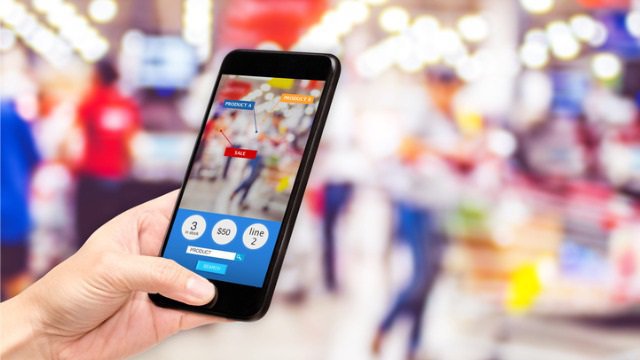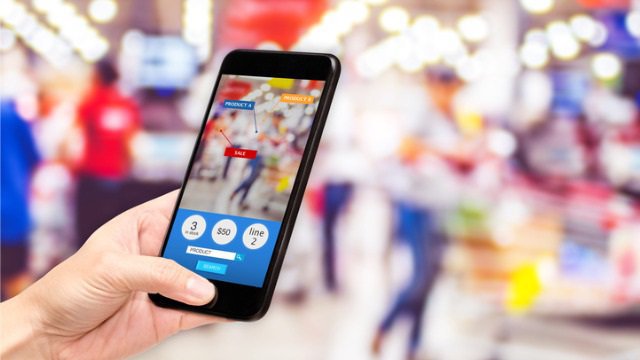
By Blair Newman, CTO, Bell.One
Most retailers are to looking get products and services into the hands and eyes of customers anytime, anywhere, coupled with a high-quality and consistent brand experience. One-way engagement mechanisms such as SMS, email, print, and TV advertising are passive, akin to sending a letter via stagecoach and then waiting around wondering, “Did they receive it?”
Now augmented reality apps are emerging that deliver rich, highly interactive, two-way experiences that visually engage customers and extend products and services to fingertip access, both inside and outside the store. Central to AR apps is they are tailor-made for mobile devices. Houzz reports that mobile users who engage AR are 11x more likely to purchase and spend 2.7x more time in the app.
Whether virtually walking around furniture to pick out the right fabric or choosing the perfect headlamp for a BMW, we are all kids at heart, and AR shopping experiences are lots of fun. Indeed, research shows that nearly 70 percent of consumers expect retailers to offer an AR experience. Meanwhile, research also shows that a whopping 61 percent of shoppers like shopping at stores that offer some kind of AR functionality versus stores that do not.
From furniture to clothing, from sneakers to beauty items, AR offers endless possibilities to engage customers. Recent examples include Lowe’s, which has two apps, Measured by Lowe’s and Envisioned by The Mine — that turns smartphones into powerful measurement and design aides. Gap lets customers virtually try on clothes with its Dressing Room by Gap app. BMW offers its i Visualizer app that lets customers design a 3D, life-sized version of the BMW i3, i3s or i8. And so on.
No surprise that analysts predict a rapid growth for the entire augmented reality apps and services market, projected to go from $ 2.4 billion in 2016 to $61 billion by 2023.
But not all AR apps are created equal. If thinking about creating and deploying AR apps to drive sales, increase customer retention, and drive a great customer experience, here are five keys to consider:
- Technology: For starters, keep in mind that AR apps must connect with other key enterprise systems, and that requires a deep expertise in a variety of mobile and cloud technologies. This includes underlying hardware infrastructures and the integration into back office and core business processes already in place; plus, the related software to facilitate the services. AR applications also need to be extremely pliable, in that they must be able to accommodate multiple and different campaigns and be able to scale up or down as demands or campaigns dictate. Search for technology vendors that have core expertise in the above, or better, find a partner who can provide one-stop shop capabilities to handle most if not all AR integration challenges.
- Flexibility: Speaking of multiple campaigns, look to create an AR solution that is flexible enough to meet multiple demographics. One quick example: while millennials will naturally engage with AR apps, older demographics tend to be intimidated from using newer technologies. In this case you would want to consider incorporating an audio/voice recognition application that enables an older demographic to speak commands, versus having only the ability to interact with the application where it requires the customer to manipulate the experience on their own.
- Data analytics: AR solutions should capture deep analytics and data that can inform the next campaign or spur new ideas for more efficient and targeted engagement. Retailers are discovering that AR is a strong mechanism for driving impulse purchasing, which also provides a bit of defense against price-driven Amazon shopping. Did you realize that 72 percent of AR users said they purchased stuff they didn’t plan to buy. This is because AR enables the customer ‘try on’, change colors, etc., which means more time at the site or in the shop, and more time interacting with products. As such, AR can deliver insight into customer behavior that was simply not possible prior: How long did the customer engage the AR app? Which demographic used it most? Which touch points within the app drive the most consumer activity? How and when does the customer make an impulse purchase? Track those entire cycles, then take that data to deliver even more engaging solutions/campaigns.
- Personalized: Thinking again about strategies that keep shoppers on your site and not Amazon, paramount is creating AR experience that are personalized to users. Key to this is coupling AR with predictive analytics. Sure, the AR experience is nice and shiny and looks beautiful. But the customer may not be interested in a shirt now, and instead may really be looking for shorts. Off to Amazon they go. Instead, by coupling AR with AI-driven experiences and analytics, companies can better engage the user with personalized campaigns that drive usage and those impulse sales (and more brand affinity/loyalty from the customer).
- Ubiquitous: The AR app should generate additional revenues to justify the expense in building it! So get creative and start thinking about virtual showrooms, location-based offers, and content-based AR. Everyone reading this here realizes that when you go into a grocery store the most asset is the end caps. They sell that positioning on the floor to vendors and suppliers. AR can accomplish the same thing by creating additional virtual shelves or end caps on your site; or, used within brick and mortar stores at key impulse purchase points. AR apps can also be embedded it into partner sites and digital marketing, creating instant new revenue channels. That’s truly connecting with customers anytime, anywhere. Think hard about how, when and where your AR apps can be turned into instant and ubiquitous ecommerce locations.
- Content still king: Especially true with AR, which when coupled with great content creates a powerful combination that draws a very captive audience into your products/brand. A great example of this is Ikea which offers Ikea Place, a simple-to-use app that lets consumers see how furniture will look and fit in different rooms. It’s also important to keep in mind that content used within AR can be protected using blockchain, mitigating piracy and asset protection concerns.
Finally, be careful when partnering with an AR designer/integrator, don’t be enamored by some new buzzwords which can cause you to commit to a nightmare scenario of getting locked into the wrong core technologies and services that ultimately limits flexibility and scalability. Ask first, ‘what are we looking to accomplish?’ and ‘what customer behavior are we trying to drive?’ versus ‘what technologies should we use?’ Instead of the technology driving you, use the technology to drive your business.
Topics: Handsets / Devices, In-App Payments
Sponsored Links:

